Vertical - Paul Heuberger
June 2021
Paul is full of stories, memories, ideas and vision.
We tried to pack everything into this interview.
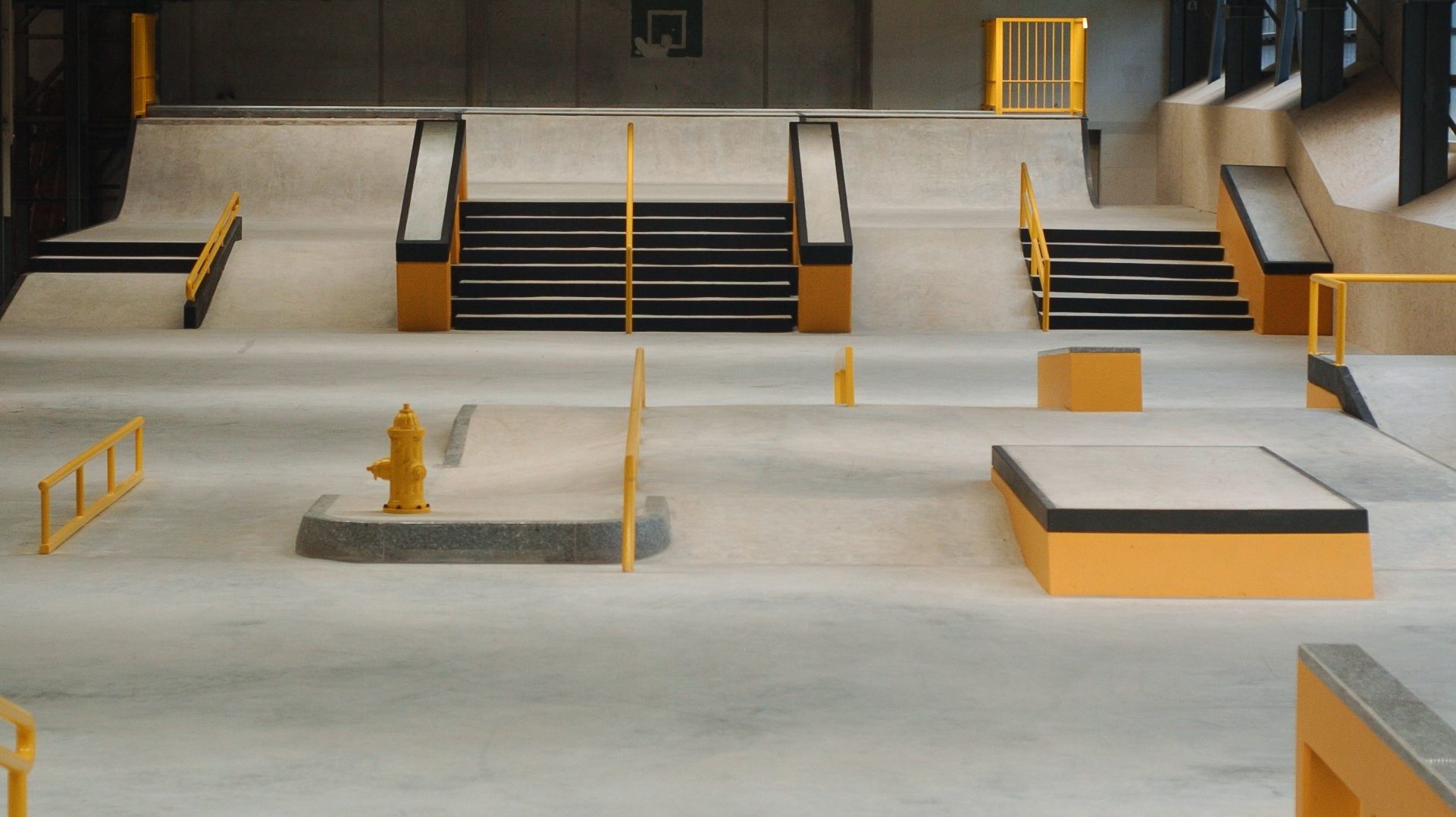
Hi Paul. How are you?
I feel very happy with what I am doing in my life. Since I was 12 years old, skateboarding has fascinated me and has always been with me. For over 30 years I have been allowed to build skateparks and other recreational facilities with my co-workers. It fulfills me to see that what I do meets people’s needs for movement, creativity and peaceful interaction.
Tell me how and when it all started with Vertical?
I started skateboarding in 1978. First with a plastic board with hard wheels with open ball bearings. Soon I needed better equipment and found like-minded people in the neighbouring village who were already riding slalom and freestyle with branded boards. I sold everything I had in the attic at the flea market to buy a new skateboard. The first one was a G&S Teamrider with Tracker MidTracks and OJ Wheels.
First I learned freestyle tricks like walk the dog, spacewalk, kick flip, rail flip, 360’s, handstand and I even learned the handstand kick flip. At that time there were only the disciplines freestyle, slalom and high jump. I took part in contests and was successful. In 1980, at the age of 14, I became Swiss champion for the first time and held the junior Swiss record in the skateboard high jump with 1.19m.
In the following years the first halfpipes appeared and I became Swiss halfpipe champion several times and skated at European level in the contests. My special trick was the frontside handplant. Florian Böhm, a German pro skateboarder from the Titus Team, took a really good picture of my FS Handplant. He sent it to TWS and they printed it, which made me super happy. At a camp in Bourges, France, I met Tony Hawk, Mike McGill, Kevin Staab and other pros from the US. There I also made friends with Dan Bourqui, a Swiss Vert skater living in Brazil. I then decided to become a professional skateboarder.
For a while I lived in Geneva because there was the only halfpipe in Switzerland in a hall and I could skate every day. I had sponsors, was photographed for Swiss magazines and was on my way to make a living from skateboarding. In the near future I wanted to live and skateboard as a pro in the US. But after a series of serious injuries, I realized that the career as a skateboarding pro was no longer feasible.
“In 1980, at the age of 14, I became Swiss champion for the first time and held the junior Swiss record in the skateboard high jump with 1.19m”
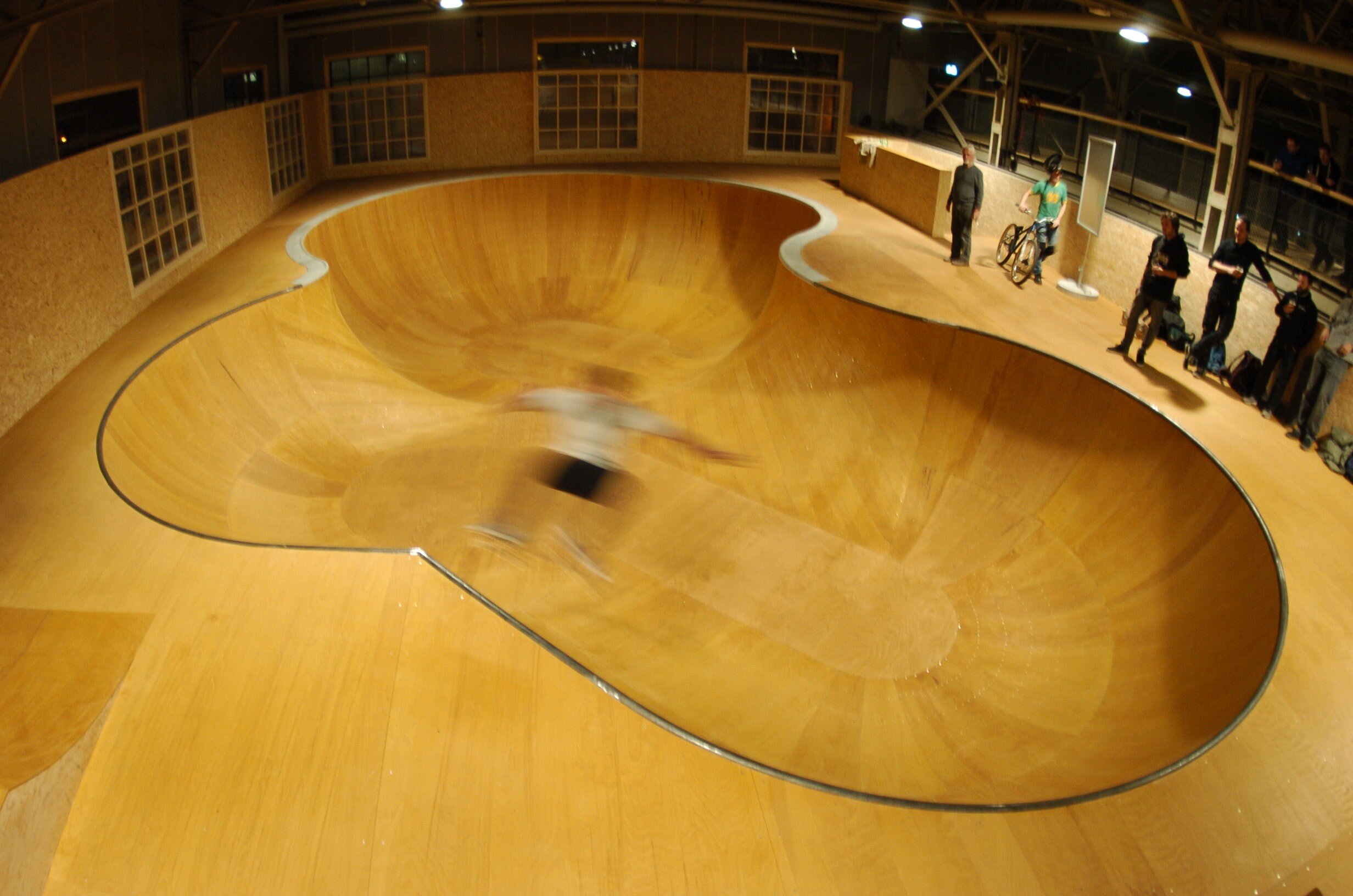
In 1988 I drew plans and realized a 9 m wide, 14 m long and 3.5 m high halfpipe made of a steel construction on the sports field in Riehen near Basel. The news of the “huge” halfpipe spread quickly through the skateboard scene. Contests were held on this halfpipe and soon the first requests came from distributors and municipalities.
In 1989 I visited my skater colleague Dan Bourqui in Brazil. There I started skateboarding again after an accident-related break of almost two years and learned to ride in a way that I didn’t fall anymore. In Brazil I developed the idea to build skateboard facilities professionally. At that time there were no manufacturers of skate facilities. All halfpipes were self-made or built by carpenters. The results were very different in quality which drove me to build my ramps perfectly.
I founded my one-man company Vertical Technik Paul Heuberger in 1989 and converted it into a stock corporation in 1997. From a one-man business, I developed the company into a company with standing and name in the international scene. During the boom around the year 2000, I employed 25 people.
By supplying events in Switzerland and other European countries, Vertical quickly made a name for itself as a supplier of quality and reliability. The deliveries went to almost all countries in Europe and to many communities in Switzerland. At the request of professional skaters, mobile show ramp systems were rented to the Planet X-Games in Australia and sold to Red Bull in the USA and Brazil.
“In just two weeks we designed a mobile halfpipe made of aluminum for Tony’s Boom Boom Huck Jam Tour. This halfpipe has become the most popular ramp among pro vert skaters and it is still skated daily at the Birdhouse camp.”
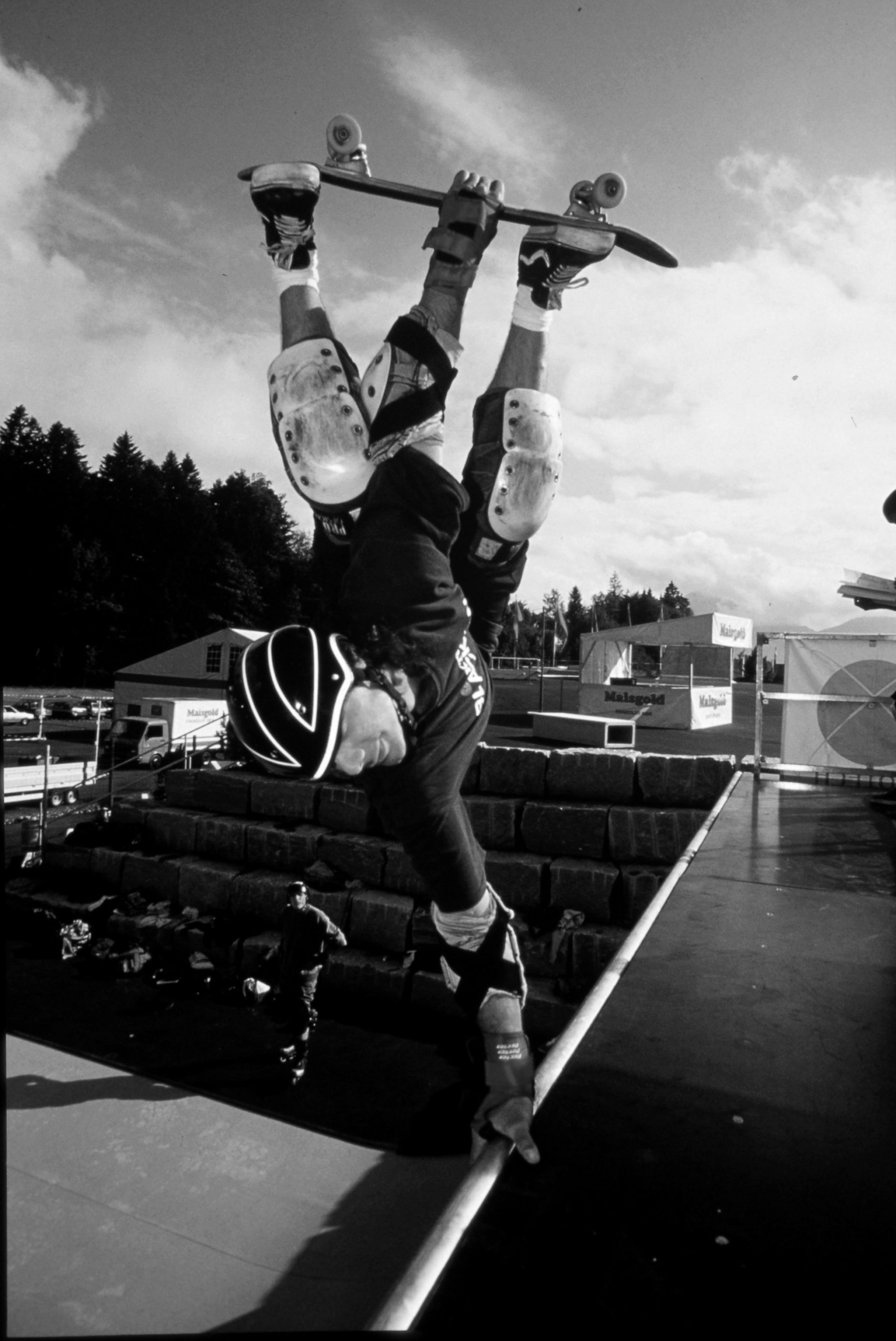
I was allowed to design a mobile show ramp for Tony Hawk, for which I was invited to Lititz (Pennsylvania) to the company Tait Towers for 2 weeks. In just two weeks we designed a mobile halfpipe made of aluminum for Tony’s Boom Boom Huck Jam Tour. This halfpipe has become the most popular ramp among pro vert skaters and it is still skated daily at the Birdhouse camp.
Over the last 30 years we have developed into a competent team with 13 employees. Today we design, plan and build different types of amusement parks. In addition to skate parks, these also include facilities for street workout, parkour, ninja obstacle courses, climbing objects, playgrounds, pump tracks and exercise parks.
My vision is the combination of leisure activities for different generations – so called generation parks in public space. They serve the active leisure time activities of parents with small children, children, young people, adults and older people on one property.
With workshops that involve the future users, we pick up the needs and implement them individually within the framework of our customers. This enables a peaceful pastime. People can develop and consolidate their social competence in the environment of social interaction.
Our offer is unique because we bring concrete experience from all areas. We are athletes, visionaries, conceptionists and doers – all from one source.
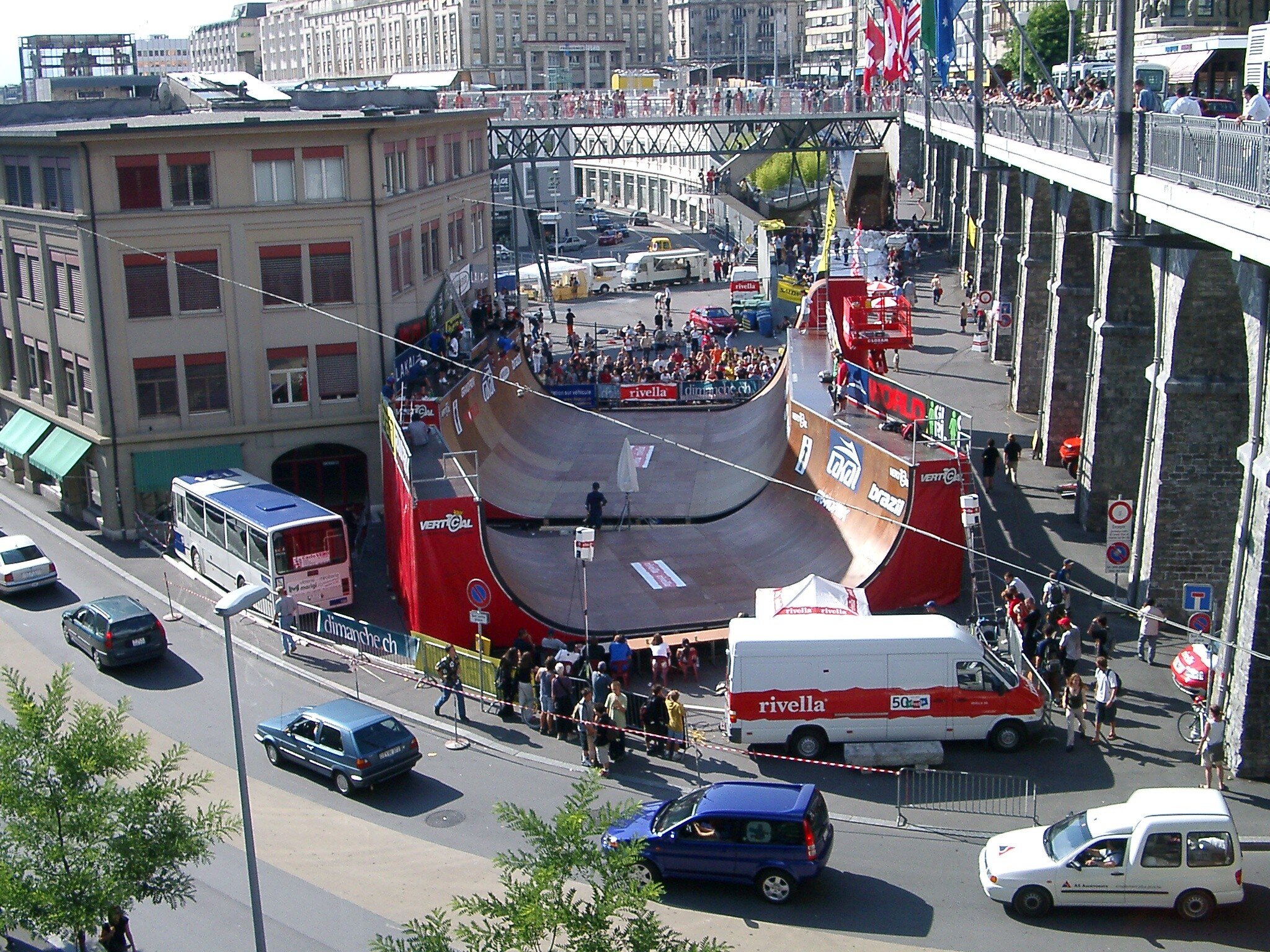
“Tony Hawk, at a mega show in Paris Bercy, wrote on the riding surface that this was the best show ramp he had ever ridden. Shortly before he had done the first 900° on this ramp.”
You completed the entire interview in one answer. A very impressive story. How has skateboarding developed in the past 25 years from your point of view?
The skateboard scene as I knew it as an active skateboarder doesn’t exist anymore. Those were contests where skaters from all over the world came to spend an explosive weekend with like-minded people. There are now so many skate parks and skate spots that you don’t have to travel to meet like-minded people.
Skateboarding has probably shaped today’s freestyle scene the most and influenced the types that have evolved from it. Snowboarding evolved from skateboarding. Before that, surfing had a big influence on the development of skateboarding.
For example, a creative DIY scene emerged in which skaters and their friends build concrete skateparks on fallow land. Ramps are built by hand with partly primitive means and little know-how. Every day people come together to skate, eat, drink, discuss and spend time together. Through social media networking, worldwide projects have emerged with the focus on spreading skateboarding and making it accessible to everyone.
The weaning industry is constantly launching new products to stabilize sales. Globalization is also leaving its mark here. Many brands no longer exist. For some years, the small plastic board is again a trend, which also brings many
girls to skateboarding. A skateboard has become a means of transportation for many, less a leisure activity. Skateboard events have become rare today and when they do happen, they are very commercially oriented. The advertising budget from the big players is now invested in social media rather than events. Pictures, videos and influencers are the sales tools of today.
But what has certainly remained is the feeling of belonging to a community as a skateboarder, no matter where in the world you meet other skaters.
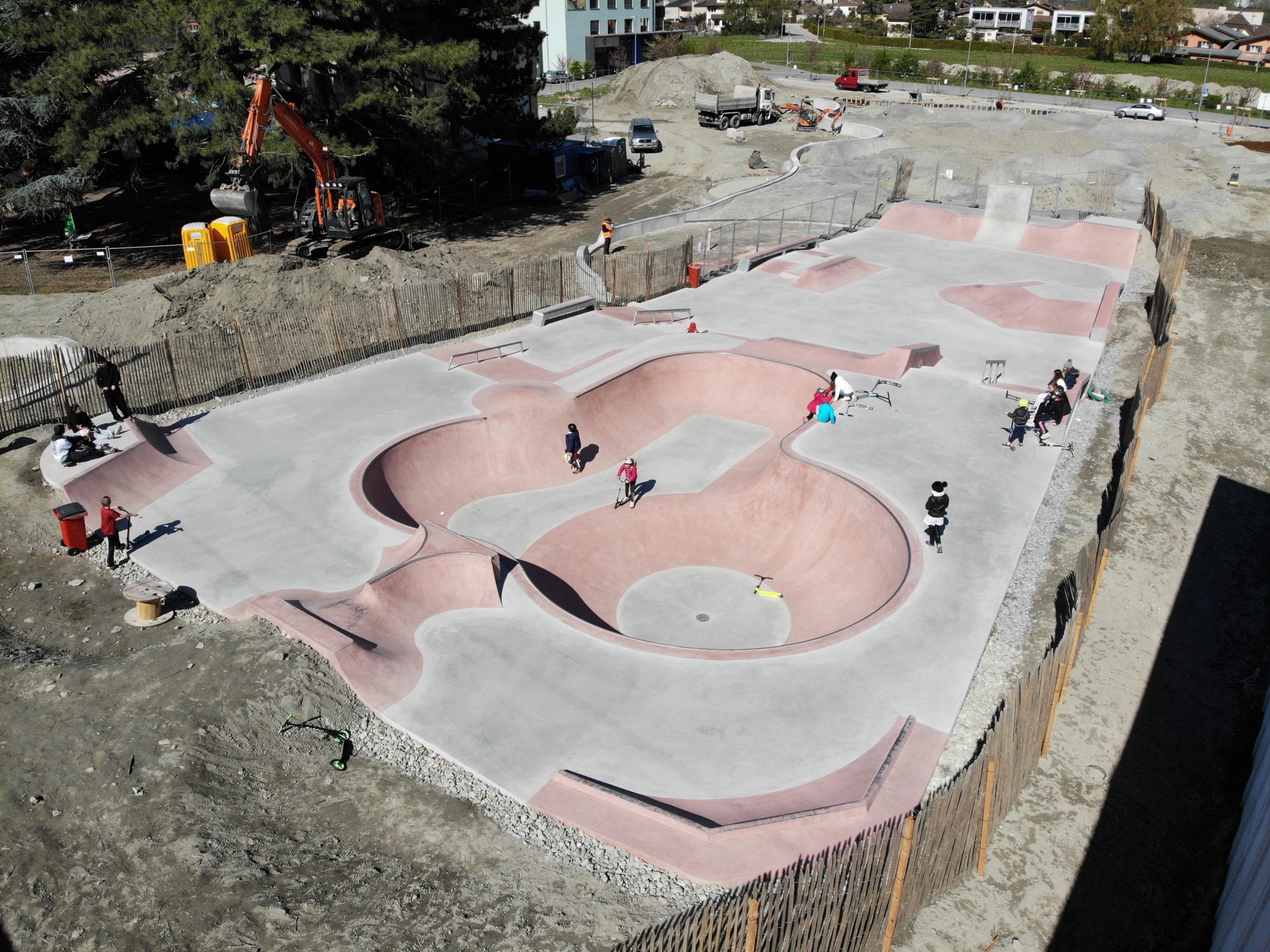
You also had to adapt to this development. From carpenter to concrete mixer, so to speak. How difficult was/is the process?
More like from locksmith to concrete mixer. I learned to be a machine mechanic in a small company. There I learned to turn and mill precision parts from raw materials. At the age of 23, I actually only founded the company because my customers wanted to buy products that didn’t exist on the market. As a young entrepreneur and skater, my focus was always on innovation and quality.
In the first years of my company activity, I had no plan in which direction I should develop the company. Only my quest for perfection was my motivation, which always accompanied me in my workshop. I was driven by my inventive spirit and I was very happy when the pro skaters at the shows said that my mobile halfpipes were better to ride than others. Tony Hawk, at a mega show in Paris Bercy, wrote on the riding surface that this was the best show ramp he had ever ridden. Shortly before he had done the first 900° on this ramp.
We built the first concrete skateparks in 2011 and since then we have worked our way up to become the market leader in Switzerland. A few years earlier, I had already started to educate myself self-taught in concrete construction. Since concrete construction has few parallels to metal or timber construction, and at the same time there are other legal regulations and building rules, a long period of preparation was necessary. My goal is to be able to meet the established construction companies on an equal footing to ensure that the skateparks in Switzerland are built by competent skatepark construction companies.
We acquired the know-how to create perfect concrete surfaces. To do this, we had to build up a crew and acquire machines and tools in order to be independent. Only in this way is it possible to implement our high quality standards. We are now in a position to accept large orders at short notice and to cover them ourselves with 100% vertical integration in all areas. This is a great advantage for our customers, because a skatepark is a very special construction, which is ideally built by a total contractor.
As already mentioned, you had 25 employees in 2000. How many are there today and how difficult is it to adapt the company to the market conditions?
A skatepark is a niche product and the success depends on many factors. It is impossible to live only from skateparks and at the same time employ a permanent crew all year round. In the first 20 years it was always a big challenge for me personally to keep the company afloat. In the season we were always overloaded and needed a lot of people. In winter there were few orders and we had to produce for stock, which tied up our financial resources. Since we produce large objects, we need a lot of space in production and in the warehouse at the same time, which means high fixed costs. Currently we have around 2000 m2 and even that is sometimes too little.
As a result, I was constantly rotating. I was either busy handling projects or saving the company. When we were deep in the red in 2005, I had to restructure the company. We turned over every franc twice before spending it. It also took an extraordinary effort by all employees for several years to get the company back into the black. Together we managed to do that, and now we are standing on the market in a new position and with a much broader product range.
You celebrating your 30th anniversary in 2019. Congratulations. Were there moments when you had to or wanted to throw down the drill?
In the 30 years of my company’s history, there were many situations that I like to remember. I am basically a very positive person and I believe in the good. What seems negative to me, I bypass or leave out. This allows me to focus on the positive aspects. However, as an entrepreneur, I also had to learn to deal with economic disappointments. Finding solutions has always interested me, though, and this has allowed me to learn something positive from the negative.
“But what has certainly remained is the feeling of belonging to a community as a skateboarder, no matter where in the world you meet other skaters.”
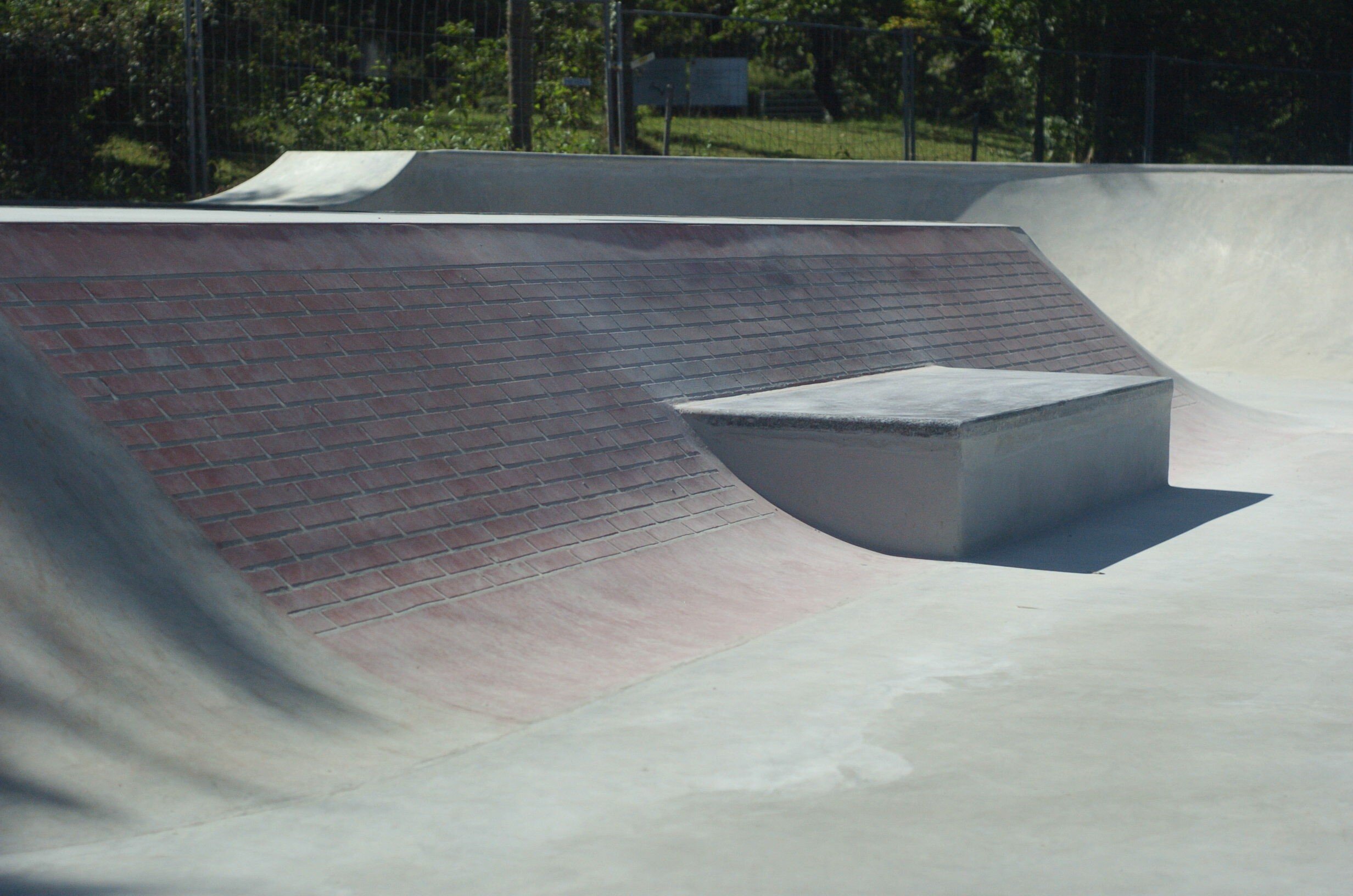
You’ve expanded your offering with street workout, climbing facilities, playground equipment and so on. Where is the greatest demand?
Our offering generally includes recreational facilities and communities have very different needs. We’re noticing that there’s still a lot of demand for skateparks, because now more than ever they offer open spaces for many groups and ages. Street Workout is on the upswing at the moment because it combines movement, freedom and a positive attitude to life, which appeals to many people.
Do you produce everything yourself?
Yes, we have a vertical range of manufacture of 100%, as this makes us more flexible and efficient.
Which country is still on your wish list and why?
In the past, when we were the only specialized company for skate equipment in the entire European market, we delivered to almost every country. For five years I ran an offshoot in France to have a leg up in the EU. This gave us a lot of experience and made it easier to distribute our products. In the meantime, there are companies in all European countries that also offer skate parks and skate facilities. Today we are very satisfied with our position in the Swiss market, but when requests come from abroad, we are happy to export to almost any country. For me the most important thing is to supply people with our products, so they can cover their needs for movement, creativity and identification.
Are there still orders for half pipes?
We delivered the last Kingsize Halfpipe to the Davos Sports High School in 2015. It was our former show ramp that was used in many countries in Europe at shows and contests. The same halfpipe was rented by Iouri Podladtchikov (Olympic Champion 2014 Snowboard Halfpipe). Iouri prepared for the Olympics with individual off snow training for two years on his skateboard in our halfpipe in his hall. I am extremely pleased that the training on our halfpipe contributed to the success of the Swiss athletes in Sochi.
In 2012 we delivered a Kingsize Halfpipe with 4.5 m height and 12 m width to Strasbourg in France. In the meantime, many contests have taken place on it, with international pros also riding shows on it. It was rated as the best outdoor halfpipe by professional skaters.
How long does it take from the design to the opening of a ‘standard’ skatepark and what are the costs?
The lead time for the workshop/planning/implementation process is around 3 to 6 months (concrete parks). For mobile modules the whole process takes 4 – 8 weeks. We have already built parks for 150,000 CHF and the most expensive was 1.7 million CHF. So there is something for all budgets.

With this high density of skateparks, do you see the actual skating on the street threatened with extinction?
As a means of transportation, the skateboard is still up to date, especially for experienced riders. There are a lot of skaters who don’t like to ride in skateparks because the environment isn’t real enough for them. They will continue to look for spots and shred there.
As a skatepark builder what tips can you give to skaters to find their way around the park and to improve?
My tip is to approach new terrain slowly, try out which areas suit you and then gradually build up the tricks and variations. It is also important to set goals that are realistic to achieve.
What are some of your current projects?
In March, we had opened two concrete skateparks in the canton of Valais in Switzerland. Our concrete skatepark in Martigny is already considered one of the most beautiful in the whole of Switzerland. It impresses with its coloured concrete, a modern design and its versatility. We built the other concrete skatepark in Riddes. Both facilities contribute to the quality of life of young people and skate fans in the region. We are also well on track in the Street Workout sector. In the city of Basel, for example, we have opened a street workout facility in a park in the middle of a very urban neighbourhood. A very big project and also in Basel is the trend sports hall Overground, where Ninja, Parkour, Chase Tag, Street Workout, Tricking and Bigbounce can be trained.
We accompanied the project from planning to implementation. The trend sports hall will open in the summer.
What do you think about skateboarding at the Olympics and where is the journey going?
There are two camps among skaters. Some see it as an opportunity for the sport. The others see it as a betrayal. For us as a manufacturer of infrastructures for the sport it is a chance to implement interesting projects. For the communities, skateboarding became an officially accepted sport by becoming an Olympic discipline. For me personally, skateboarding is my lifestyle and I only ride for fun.

